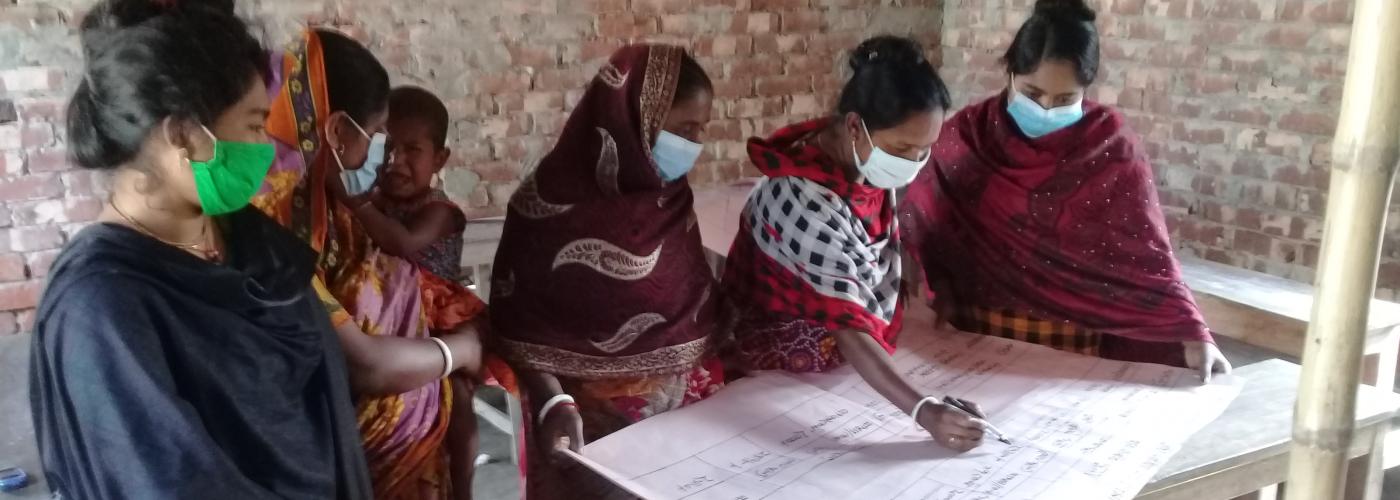Let Women Work: What She Knows Matters
Image

The COVID-19 pandemic set women back in labor force participation for (now) well-known reasons: women typically shoulder more care burdens and disproportionately work in less remote-compatible occupations. According to the World Bank, the rate of work stoppage was 7 percentage points higher for women than for men during the pandemic in 48 countries. The longer, historical view is even more sobering. The global labor force participation rate for women including formal and informal work is just over 50 percent compared to 80 percent for men, with the gap not moving much between 1990 and 2019 despite gains in female education. What can USAID staff and partners do to address some of the seemingly intractable social norms that impact women’s participation in the labor force? What evidence exists to guide the way forward?
The idea of a working wife
In many USAID host countries, the prevailing social norm is that women, notably married ones, should not work for pay outside the home, especially under common conditions such as long business hours and public interaction. For example, in 2018, only 26 percent of Jordanians considered it acceptable for women to return home from work after 5 p.m. Programs attempting to work within these norms must limit themselves to very specific, remote professional services, or microenterprise models depending on other market players to perform key functions such as marketing or fulfillment. This begs the question, what does the deciding party, in these cases, the husband, really think about the prospect of a working wife? In Saudi Arabia, only four percent of young married males in 2018 reported that their wives worked outside the home. However, a 2020 study found that 82 to 87 percent of these young husbands’ private view was, in fact, that women should be able to work outside the home. Crucially, when asked to estimate the percentage of their peers sharing this view, 75 to 92 percent of them underestimated the proportion. Most interestingly, for those husbands who learned from the researchers the true proportion of their peers believing that women should be able to work outside the home, 16 percent of their wives applied for a job outside the home in the ensuing five months, compared to 6 percent for those wives whose husbands did not know the actual opinions of their peers. This relatively modest gain suggests other, countervailing considerations, such as more conservative and powerful authority figures. Nonetheless, it is also a significant impact from applying a psychological, behavioral insight around peer pressure, and cost-effectively sharing factual information in a very challenging context.
Vouching for working conditions
Beyond broad notions of propriety, some families’ concerns about young women working have to do with personal safety. In response, one (non-USAID) program in India seeking to support female employment as kindergarten teachers created two “family-orientation” videos. One highlighted the non-monetary benefits of employment (e.g., personal growth), the other addressed common concerns, mostly around safety. Another intervention was guided by conversations between the teacher and her family members about the pros and cons of her working. As it turns out, none of these had any effect on family member attitudes or the retention rate of teachers. As the researchers surmised, the families likely viewed individual employer assertions about the jobs they offered as “cheap talk,” and not very credible.
Self-efficacy and advocacy
If employers are not credible sources regarding the benefits of work, what about the women themselves? Another study in rural Uttar Pradesh partnered with one of India’s largest carpet manufacturers to offer psychosocial training to women to boost self-efficacy. The firm offered paid training followed by employment in carpet weaving. This study found positive results: increased self-efficacy of the women, increased sign-up for the training-to-employment program at the firm after two weeks (26.2 percent from 19.4 percent), and increased income from work four months after the intervention (31.9 percent from 23.2 percent). Perhaps most interestingly, the intervention seems to have improved mutual awareness, communication, and consensus within the family, increasing family members’ interest in women working and women’s predictions of this interest, as well as reducing disagreements about whether women should work for the firm.
Changing norms with information
Trying to change social norms in any country can seem like a Herculean undertaking, especially if one hopes for immediate change for all. However, there is now emerging evidence on promising solutions that can be low-cost and impact a significant proportion of households. These involve equipping women and their male and female family and community with information about actual attitudes of peers and neighbors, the women’s abilities and aspirations, and changing views within the family. As more evidence on aid effectiveness in these and other important topics emerges, USAID DDI’s Center of Economics and Market Development and Gender Equality and Women’s Empowerment Hub will continue to showcase them here on Marketlinks. This evidence brief “clearly shows that there is a strong causal relationship between gender equality and prosperity—and we have learned a great deal about how and why that is true.” The Gender Equality and Women’s Empowerment Hub works to shift norms to increase gender equality, resulting in positive long-term, systemic change.


